Knowing What Good Looks Like – effective call center program

Our many valued clients have a common passion and commitment to create outstanding businesses for their customers. They understand the strategic importance of having a highly effective call center quality program within their organization.
Effective contact center program
From experience, we know that many organizations see QA as a purely or largely compliance-driven, risk-based activity. However, we know that the real value of QA impact is much larger, and if performed in an enlightened and strategic manner it will have multiple touchpoints – we call this the sphere of influence.
Our contacts are an often-untapped source of insight that can be invaluable to other areas of the business – Product, Design, L&D, and Marketing teams, to name a few that might not immediately be associated with QA.
If leveraged effectively, the QA function can be a gold mine of knowledge that can drive engagement, enhance the experience, and generally have a real positive impact right across the business.
Over the past 30 years, we have developed a deep understanding of exactly what underpins a highly effective Quality Assurance Program, and we have identified 12 factors critical to success.
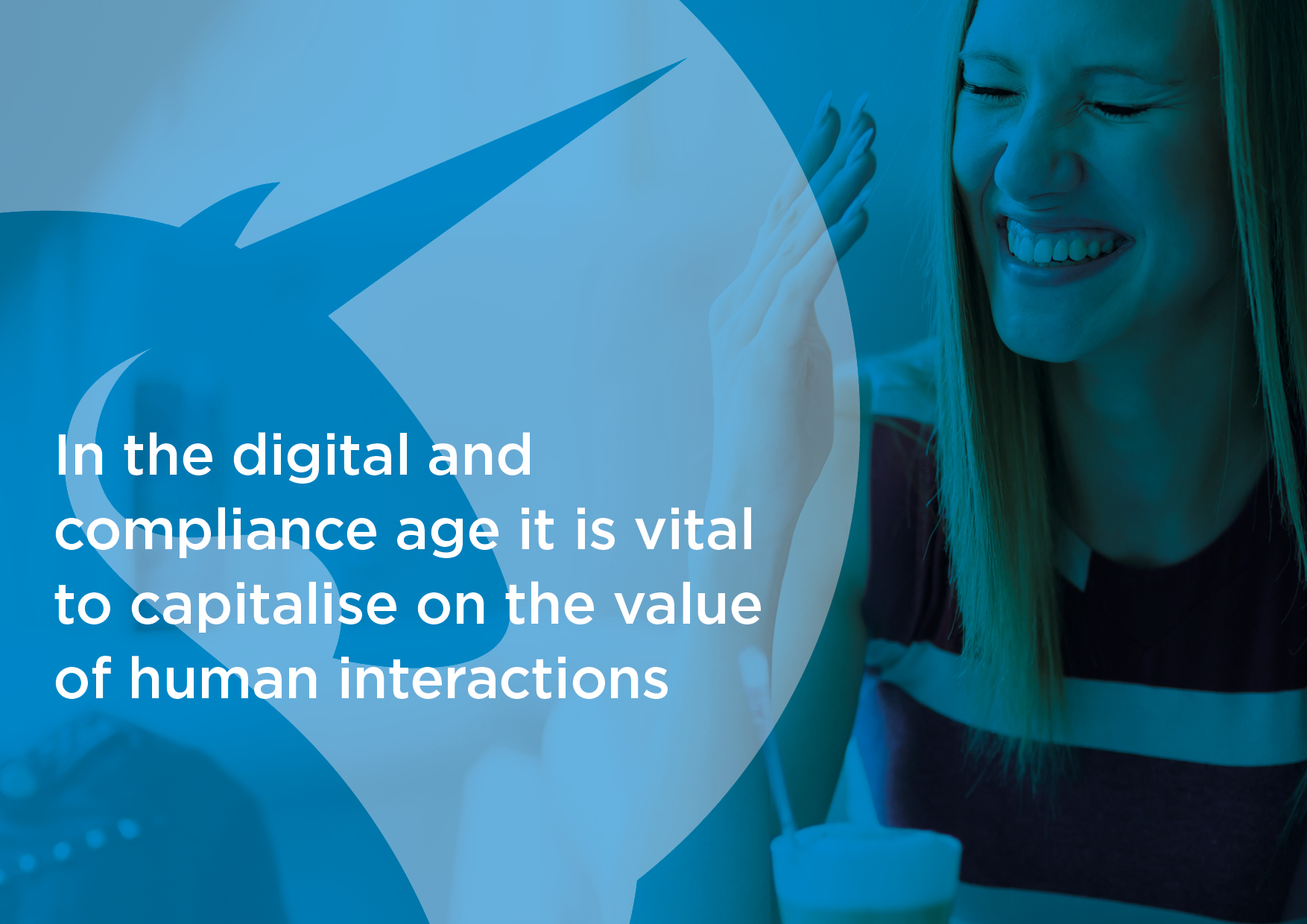
Maximizing human interactions is vital to drive increased engagement and experience across channels. In our rush to automate everything, push Customers online, and reduce expensive human contact, we must not forget the value these interactions bring to our business.
Every conversation with a Customer is a lot more than simply repeating words and phrases – it’s an opportunity to make a real connection; to build the human element. As humans, unlike machines (chatbots), we have the ability to be creative, intuitive, show real empathy, feeling, and understanding; to connect on a human level.
So why is it important to get it right?
Making emotional connections should be done intuitively and simply – humanly.
Every interaction, whatever the duration, represents an opportunity to discover valuable information about your customers, and identifying their challenges, wants, and needs. This knowledge, once identified, can provide you with actionable insight and intelligence that can be used to guide the conversation and help build more effective human connections.
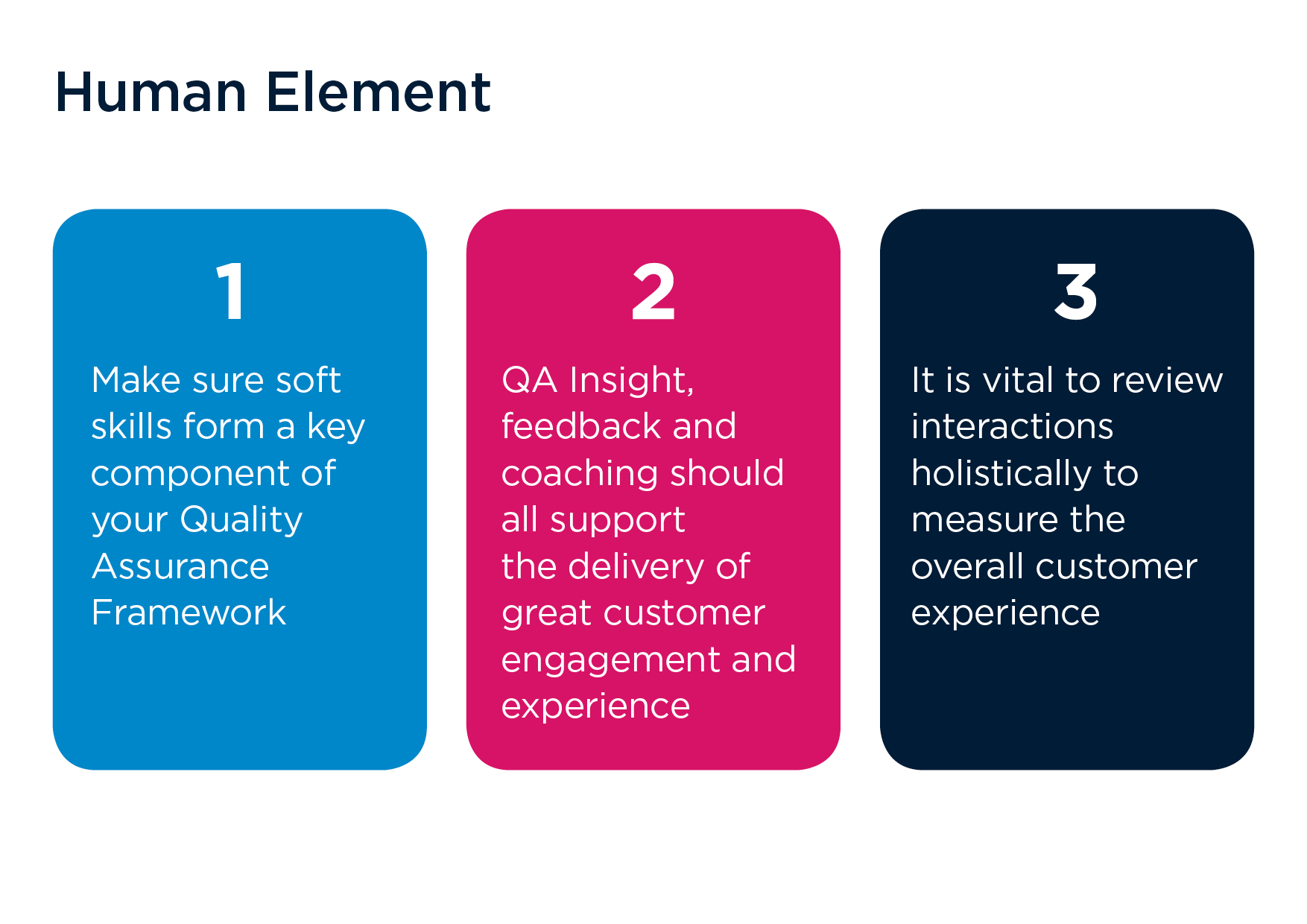
A significant focus should be placed on developing effective skills, behaviors, and coaching programs designed to maximize this great benefit to our people and Customers.
1) Keep interpersonal skills front and center of your QA framework – communication, listening and empathy often come way down the list of priorities behind procedural and compliance standards, and sometimes they don’t even feature at all in any meaningful way.
2) Ensure an effective link between the output of your QA activity and coaching, especially for the softer elements.
3) Consider whether you are routinely seeing the wider view and measuring overall CX in your QA activity.
Final thoughts around your QA function
Having worked through the above, you may also like to ask yourself: how does your organization measure up against the following points?
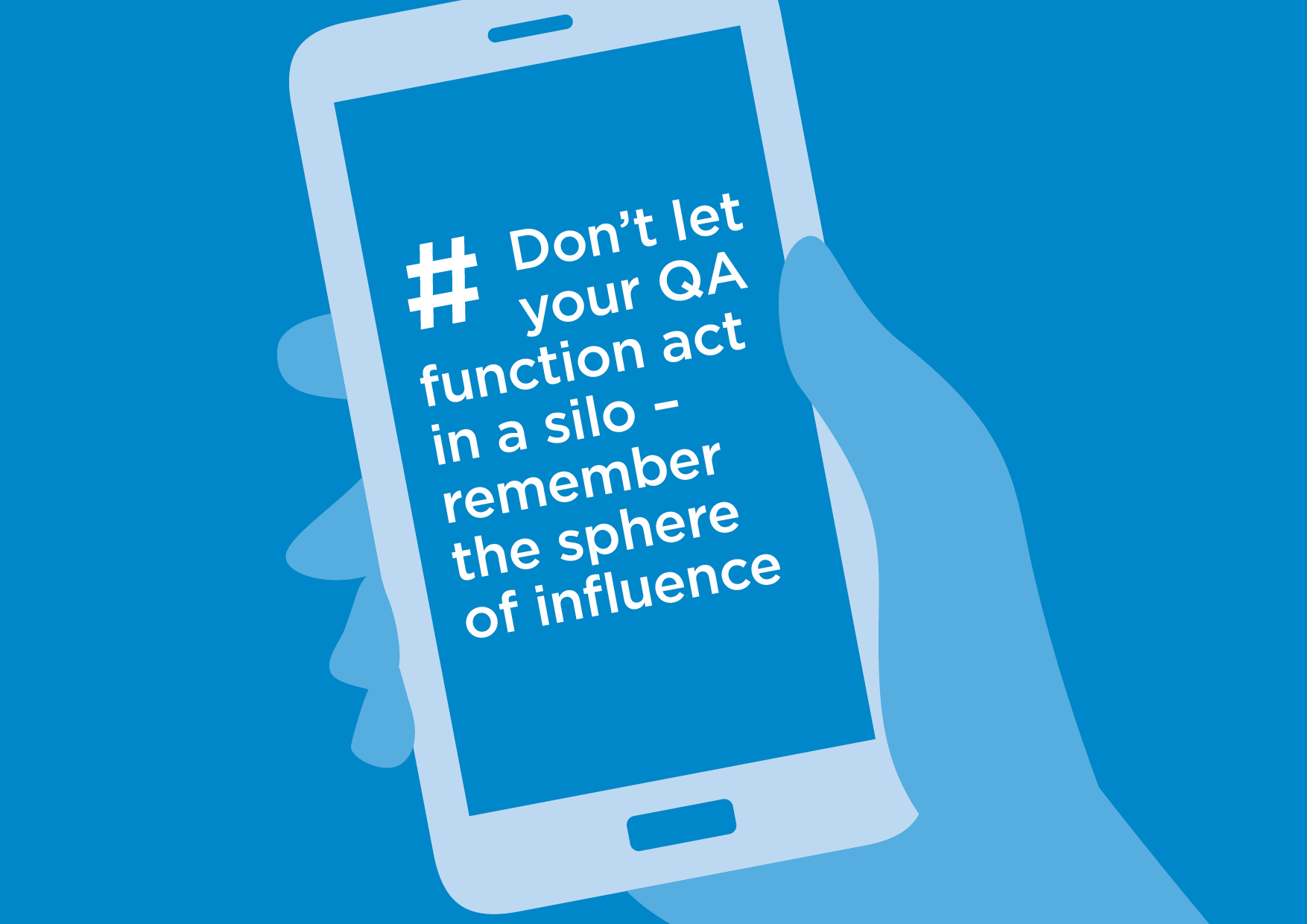
We’ve already considered the vast sphere of influence that QA can and should have in progressive organizations. The question is whether your QA function operates in a bubble, or is the team empowered to positively impact other areas of the business?
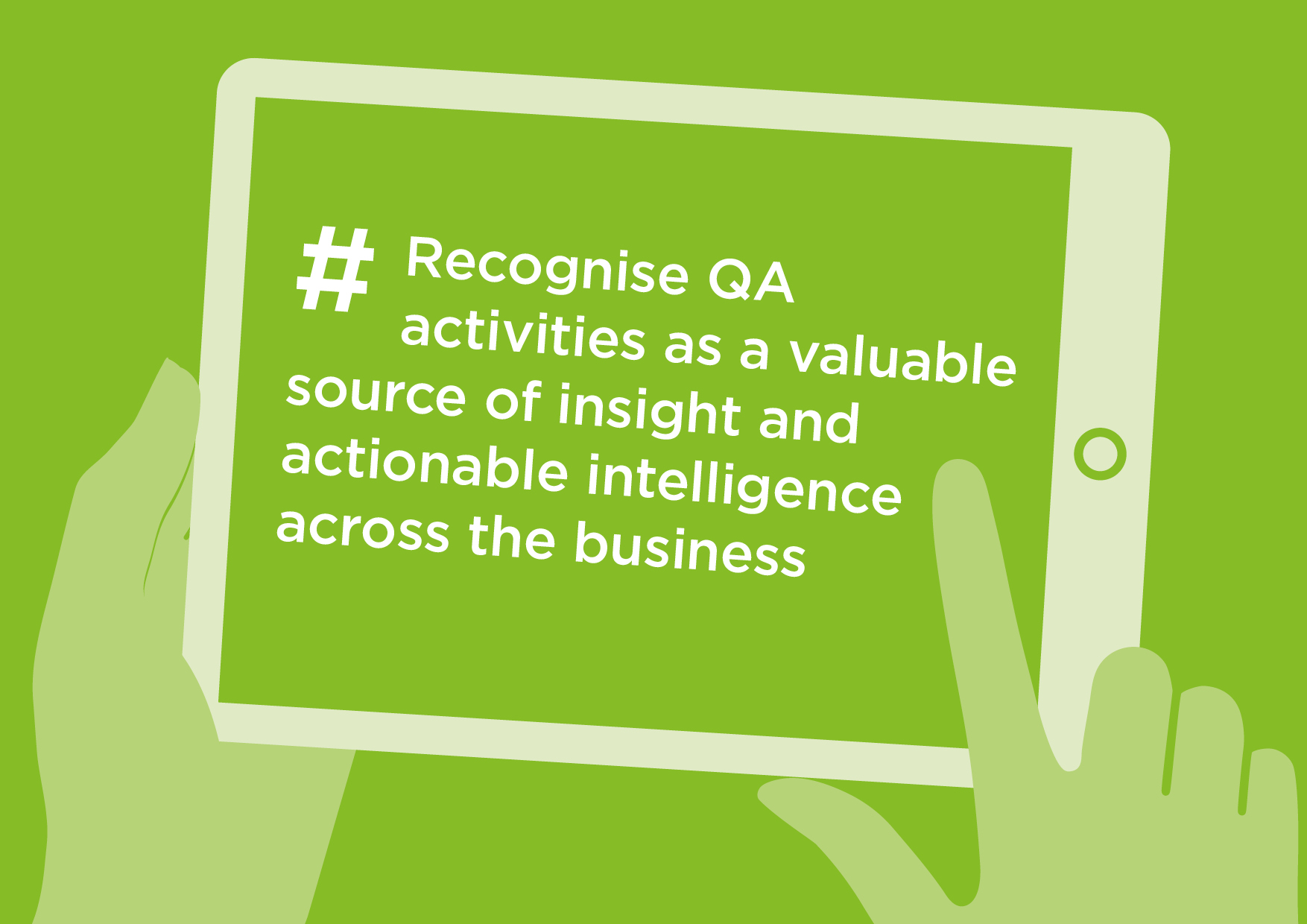
Following on from the previous tip, it’s useful to ask whether the opinions and insights from the QA team are routinely sought by others in the wider organization.
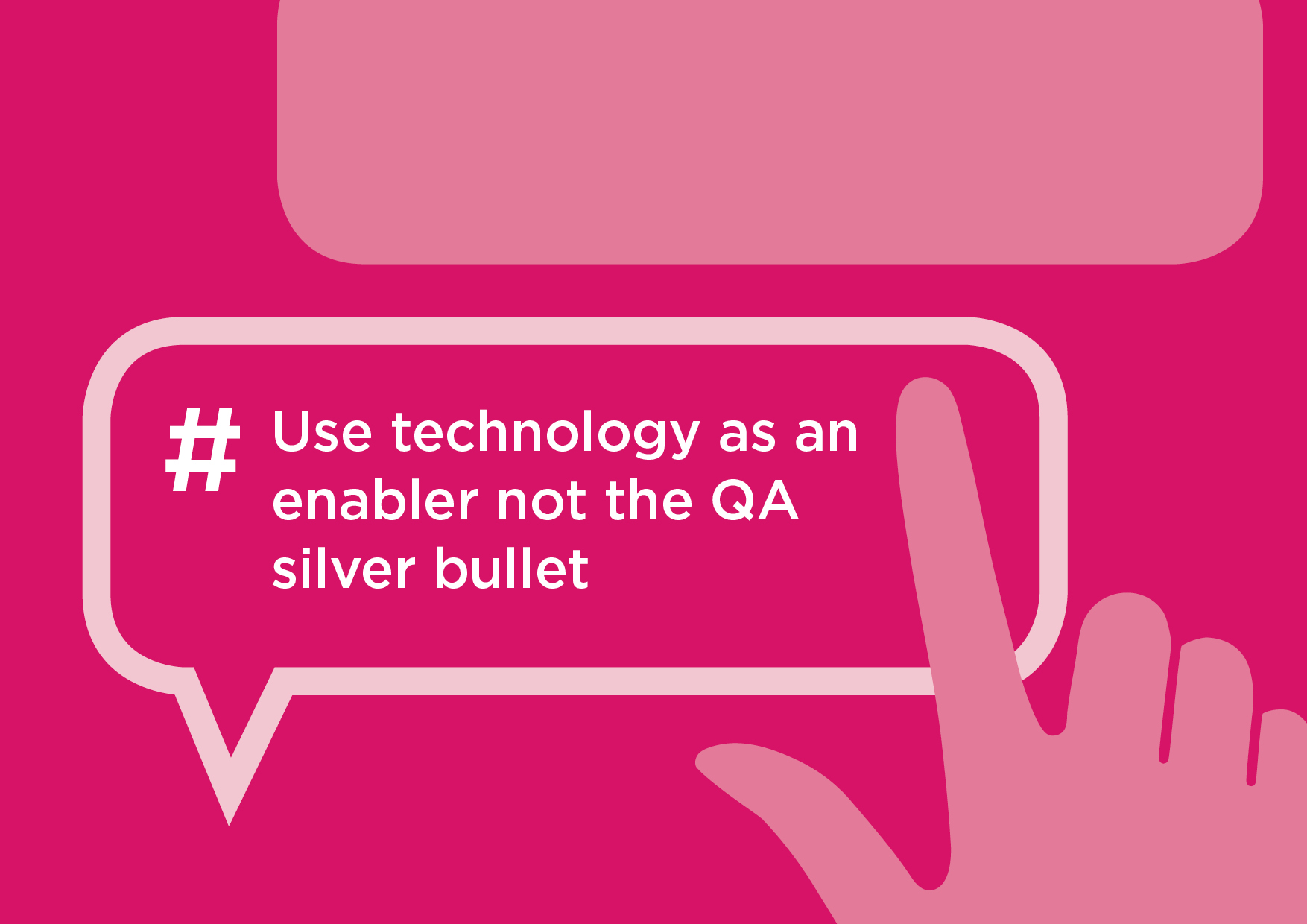
Effective, skilled deployment of technology is an asset to any company and can add a layer of depth and assurance to a QA program, but remember that until the last human customer disappears, technology solutions will ideally need to be ‘fed and watered’ by skilled QA resource who are experts in the human element.
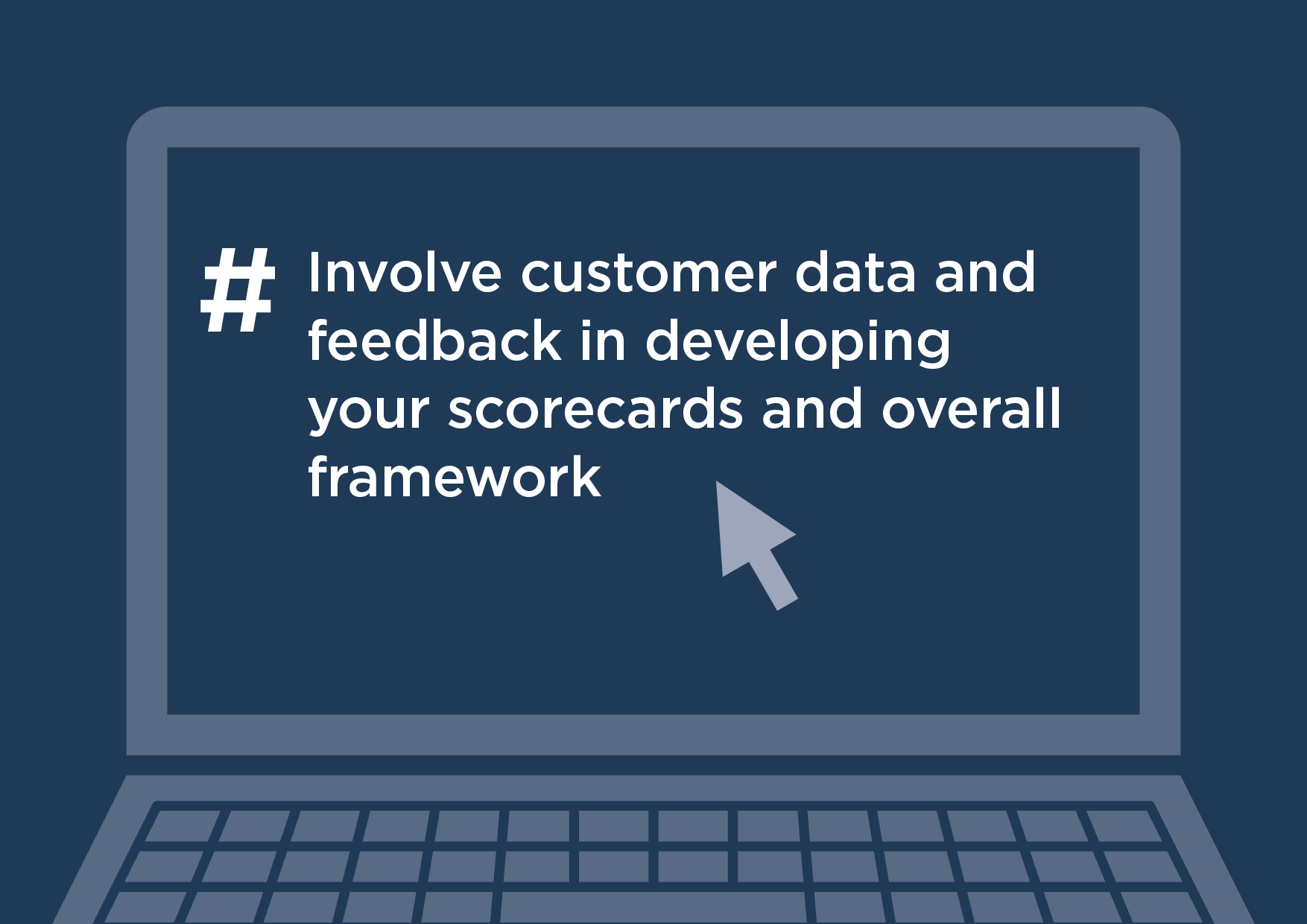
Are you incorporating customer feedback in the development of your scorecards? Are you making effective links between your CSAT and QA programs?
We could (and frequently do!) talk at great length about the power and value that an effective calibration process can have in developing and refining the QA framework and scorecard, all while ensuring consistency, accountability, and alignment.
Do you have a calibration routine, and does it follow a defined and documented process? Is calibration used to refine and update your scorecards and scoring guidelines? Do you involve other stakeholders from across the business (remember the QA sphere of influence?) Do you link the output of QA to effective coaching and wider training?
If you want to maximize your QA activity, we would welcome the opportunity to talk more about the huge competitive advantage this can provide for your business. Why not benefit from our hugely popular Quality Effectiveness Audit – contact us for more details and to book this.
